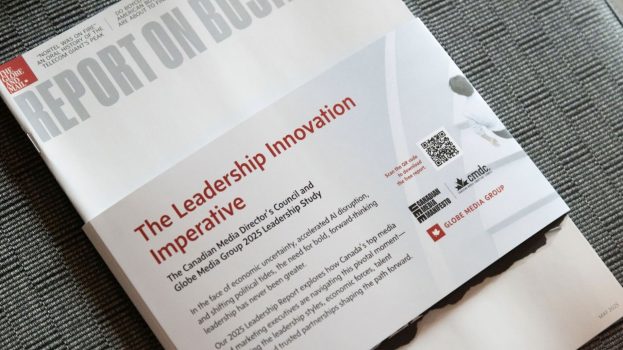What do women want? It’s an age-old question, asked by fathers, boyfriends, husbands and, more famously, by the chauvinistic ad exec played by Mel Gibson in 2000’s What Women Want. He solved the riddle by reading women’s minds after a freak hair-dryer accident – a simple, albeit fantastical, solution to a classic advertising dilemma.
At around the same time, a newly launched media and entertainment company in Toronto was asking itself that very same question. In 2000, Corus Entertainment was still a small company recently spun off from its parent, Shaw Communications, but its vision was big: to become an international player in the broadcast media game. Finding out the answer to what makes women tick was one of the first goals the company gave itself, having decided that the women’s speciality TV market held much promise for growth, as did radio consolidation.
It was in this decision that Corus’ comprehensive approach to brand building was launched. They acquired the Women’s Television Network (WTN) in 2001, and immediately set out to rebrand it into something fresh. It was not simply an exercise to find a new logo. The decision was to take a ‘rifle-like’ approach to targeting the market, says Corus president and CEO John Cassaday, and it started with turning WTN into W.
The marketing department did focus group research to find out everything they could about what viewers liked and didn’t like about the network. They wanted to relaunch with new content and a fresh new look and, not finding inspiration in the TV world, decided to look outside of it, says Susan Schaefer, VP marketing, television, Corus Entertainment.
‘In creating W, we looked around the world for other women’s networks, and we didn’t really see anything that inspired us,’ she explains. ‘So that’s where we looked to brands like Target. They took a brand that was dowdy, tired and almost K-Mart-like and they reinvented it to be fun and contemporary, but accessible. It became Targét. We thought if we could Targét WTN into W Network then we could really accomplish our goal.’
What emerged out of the rebranding exercise was not only a sassy new women’s brand precision-targeted at the 24-to-54 demographic, but a library of information about women and a strategy that would inform future rebrands and acquisitions.
The research done for the W launch evolved into the Her Report in 2004, and became a series of reports examining different aspects of women’s lives and preferences. The Her findings have influenced everything from ad campaigns on the network to the creation of Cosmopolitan TV in 2008 and most recently Viva in 2009.
These three brands are designed to dovetail with one another demographically, and the advertising for each reflects that: W is for busy working moms and careerists who need a break from the everyday grind; Cosmo is for the sassier girl in the 18-to-49 demo, with an edgier attitude to entertainment; Viva is meant for the boomer woman, 35 to 64, a demo research indicated was going to be very attractive to advertisers as the decade winds to a close.
How each brand is positioned is directly related to its place in the demo pyramid, says Schaefer.
‘When we launched Viva, we made sure that Cosmo, W and Viva were positioned very differently. We went through an exercise where we talked about what would be the perfect movie on these networks? Who is a Cosmo woman versus a Viva woman versus a W woman? We talked about if a celebrity could represent the network, who that would be if we could just pick one. It might be Sienna Miller on Cosmo or Sandra Bullock on W.’
The company is especially proud of Viva, as its rebrand was not only all-encompassing – the channel was formerly CLT, Canadian Learning Television – but intensively researched through months of interviews with a panel of Canadian women.
Research seems to be a great point of pride with Corus. It’s also a major touchpoint with their advertisers. Through sites such as Corusknowswomen.com, which promotes the findings of Her Reports, and the kids-side version, The YTV Observer, the company constantly communicates their research to help inform brand-specific campaigns. A good example of this was the Dare Simple Pleasures campaign ‘Reinventing the Cookie,’ in which TV spots were created to match programming that highlighted the theme of personal re-invention.
As the company grows, so too has the focus on building brands that complement one another. The kids brands are a thriving example of this: YTV, Treehouse, Discovery Kids, Teletoon/Teletoon Retro (with Astral Media) on TV, Qubo (a cross-border alliance between Corus, Scholastic, ION Media Networks and NBC Universal), Nelvana animation studio and Kids Can Press publishing.
Even brands that don’t immediately look like they can fit into the framework can. Just last month, Corus rebranded the scary-movie network Scream into Dusk after ratings indicated they could get more female viewership. Thus, Dusk was born with more female-friendly suspense, mystery and paranormal-themed programming and a sexy, vampy new image that fits with trends like Twilight.
The focus on speciality looks to have been a good strategic move. Statistics Canada reported this July that speciality TV revenues were up 6.5% compared to a 1.8% decline in conventional.
But TV is not the only place Corus is pushing innovation in branding and content. A deal this May saw Corus and iTunes (in concert with U.S.-based Emmit Communications) create customized iTunes playlists from 11 Corus radio station websites, the first deal of its kind for a Canadian broadcaster. And the Alan Cross-hosted Explore Music website was given a mobile makeover this year, linking up with Viigo.
Cross-platform media initiatives will be vital to success, says Cassaday. A state-of-the-art digital rights management system will be a centrepiece of the new Corus waterfront HQ in Toronto, scheduled for completion in December. It represents a move onto the international stage for Corus, and will allow it to further exploit its current properties.
Corus’ kids properties are ripe for growth internationally, with the new Kids Can Press Scaredy Squirrel book property (see sidebar on p.36) on the verge of launching into a multimedia franchise and TV shows such as the anime-inspired Bakugan, which has already shown great promise in its first two years, says Cassaday. ‘To be able to help lead the creation of a brand like [Bakugan] globally just further establishes our credentials,’ he adds.
As Corus expands internationally – building on the cross-border success of properties such as the multi-platform brand Qubo – being able to rely on the careful cultivation of each platform will become even more important. That’s where the discipline in building each brand comes into play, which Schaefer thinks has been an important component of Corus’ success.
‘Strong brands have integrity: the programming, the voice of the network, the on-air image, what the website offers. So we put incredible effort in to make sure that everything holds together and supports that brand.’
One scared squirrel poised to take on the world
If Scaredy Squirrel knew what Corus Entertainment had in store for him, he’d probably never leave his nut tree again.
Scaredy, you see, is both a Canadian publishing success story, with 525,000 copies of his book sold in 16 languages around the world, and a squirrel that’s scared of everything. Of bees, of being bitten by Godzilla, of germs and of going to the beach.
Little does he know, he’s a brave little case study of what Corus can do when it puts its multimedia branding strategy to the test. Although John Cassaday, president and CEO of Corus, admits that it’s still early days for Scaredy, the award-winning book series that launched in 2006 is the kind of franchise-building launch pad that Corus hopes will fuel its international digital rights management ambitions, via a joint effort between Kids Can Press and Nelvana Enterprises.
Currently on Scaredy‘s to-do list: more books by Mélanie Watt, a television series, animated shorts and an international merchandising program. It’s a lot for a squirrel who’s scared to even leave his house, but Corus is betting his brand is robust enough for the task.
Jump to:























